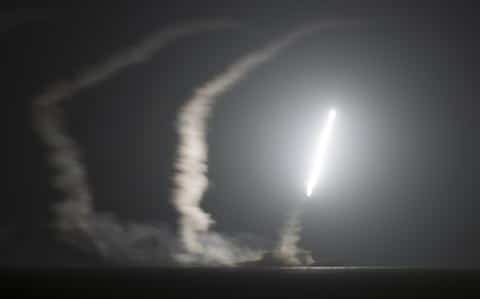US Navy to field ‘game-changer’ anti-ship Tomahawk by September
U.S. Navy to Deploy Anti-Ship Tomahawk Missiles

The U.S. Navy is set to introduce an anti-ship variant of its Tomahawk cruise missile on destroyers by late September 2025. This strategic move, described by Fleet Forces Command Admiral Daryl Caudle as a “game-changer,” aims to enhance the Navy’s capabilities against a growing Chinese naval fleet. The new missile will complement existing ship-attack weapons and bolster the U.S. military’s readiness in the Indo-Pacific region.
Enhanced Naval Capabilities Against China
The introduction of the anti-ship Tomahawk missile is a significant development for the U.S. Navy, which has been focusing on strengthening its maritime capabilities amid concerns over China’s expanding naval power. Admiral Caudle emphasized that this missile will increase the lethality of the Navy, allowing for a more versatile approach to combat scenarios. The Tomahawk, known for its effectiveness in land attacks, will now be adapted for naval engagements, providing a crucial tool for U.S. forces.
The Navy plans to begin fielding these missiles on destroyers by September 30, with submarine deployments expected between April and June of the following year, pending successful testing. The service aims to acquire up to 1,302 Maritime Strike Tomahawks from RTX Corp. This new capability aligns with the Pentagon’s broader strategy to deploy thousands of drones in the Indo-Pacific region, known as the Replicator program, which is set to launch on a large scale in August.
In addition to the anti-ship Tomahawk, the Navy is also integrating artificial intelligence into its submarine sonar systems to enhance operational efficiency. This technology has been in use on Los Angeles and Virginia-class submarines, helping to differentiate between man-made and biological noise sources.
Strategic Considerations Amid Growing Naval Competition
As the U.S. Navy prepares to enhance its arsenal, concerns about China’s naval expansion loom large. The Pentagon estimates that China’s fleet, currently exceeding 370 ships, could grow to 435 by 2030. This projection has prompted U.S. lawmakers to advocate for increased funding for warship construction to bolster the Navy’s current inventory of approximately 300 vessels.
However, Admiral Caudle cautioned against entering a “shipbuilding arms race” with China. He stressed the importance of focusing on the capabilities of individual vessels rather than merely increasing numbers. Caudle highlighted the need for high-end, capable ships, such as the Arleigh Burke-class guided-missile destroyers and U.S. submarines, to maintain a strategic edge.
He also pointed out the logistical challenges associated with expanding a naval fleet, including the need for adequate crew, maintenance, and docking facilities. “It’s not just about buying ships,” Caudle noted, emphasizing the complexities involved in sustaining a larger naval force.
As the U.S. Navy moves forward with its plans, the deployment of the anti-ship Tomahawk missile represents a critical step in enhancing its operational readiness and addressing the challenges posed by a rapidly evolving maritime landscape.
